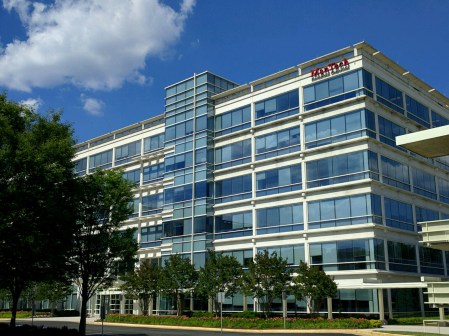DevOps becomes increasingly common inside government
Silicon Valley-style culture at the stodgy Department of Homeland Security? It’s no joke, said Barry Crist, CEO of server automation software company Chef, after recently visiting DHS’ IT shop.
“It felt and smelled like a Silicon Valley startup,” Crist told FedScoop last week at Amazon Web Services’ re:Invent conference.
Since DHS’ IT shop adopted agile and DevOps development methods, it radiates a startup atmosphere, Crist said. And DHS is not alone. Over the past two years, he’s seen agencies across government take to private sector techniques with gusto.
“There used to be this chasm between what was going on in industry and what was going on in the public sector,” he said. “The agencies that are doing the most forward-looking things are matching what’s going on in the most forward-thinking enterprises.”
Crist’s sentiments come after seeing how the U.S. Citizenship and Immigration Services improved how it processes immigration records. His company also has helped Department of Energy’s National Renewable Energy Laboratory embrace DevOps by automating its security controls when it configures its servers.
“One of the big benefits [NREL] derives from using Chef is they can fortify their security controls and privacy requirements in Chef very early on in their process,” said Chris Nimmer, federal director at CHEF. “That brought together their traditional IT operations staff and their research and development group, and they worked together much more readily on those security controls because they were hardwired in Chef.”
Chris Webber, the chief cloud architect at NREL, said the speed that comes with these services, along with the agile development culture, is something the government throughout needs to adopt.
“If we are going to start to migrate to the cloud more and more, it’s going to be on the backs of the startups,” Webber told FedScoop. “As IT organizations, we are going to have to embrace that and not rely so heavily on the big players.”
Tom Soderstrom, chief technology officer of NASA’s Jet Propulsion Laboratory, said DevOps not only moves the government away from big players but also from heavy lifting when it comes to infrastructure. He spoke of a time when his IT team took an aging mission-critical system, which would have taken 130 people to physically visit JPL to manually input their passwords to move it between NASA data centers, and fixed it with Docker container.
“One of our guys said, ‘I can do that. I’ll take the application, wrap it in Docker, and move it to GovCloud, and I’ll run it from there,’” Soderstrom recalled. “By the time the offsite people said, ‘It won’t work,’ I said, ‘We already did it, it works.’”
Soderstrom said his team didn’t always think this way — a culture change initially rubbed people the wrong way.
———————————————————————————————————————————————————————————
“One time I came in and I told my team that what we really need to do is DevOps. You’d have thought I called their mother ugly. It completely caught me by surprise.”
— Tom Soderstrom, chief technology officer of NASA’s Jet Propulsion Laboratory
“One time I came in and I told my team that what we really need to do is DevOps,” he said. “You’d have thought I called their mother ugly. It completely caught me by surprise. Developers who once developed an application, and now get called all day and night, hate the word DevOps. The operators now see their work going away and they are frustrated because they are pushing things they have to operate.”
Crist agreed that the move to DevOps is “messy,” but the government is no different than any large enterprise trying to inject fresh ideas into its workforce.
“If you went and visited General Electric or Nordstrom or Disney, they would also say culture is their biggest challenge,” he said. “Culture, re-tooling and workflow reinforce themselves in positive and negative ways. You can bring in Chef, Slack, GitHub, whatever, but if you are still culturally in the old world with silos, and development doesn’t talk to operations, you’re not going to see any gains.”
That sentiment is finally pushing agencies to change, Crist said.
“This culture change is spreading like wildfire including within the federal government,” he said. “People are saying, ‘I’m going to make a name for myself,’ pushing this within an agency.”






